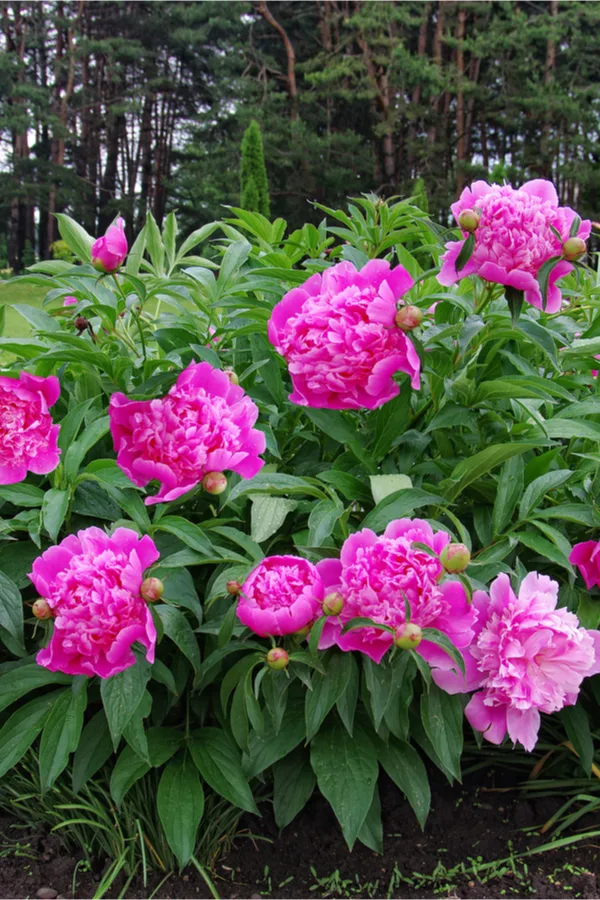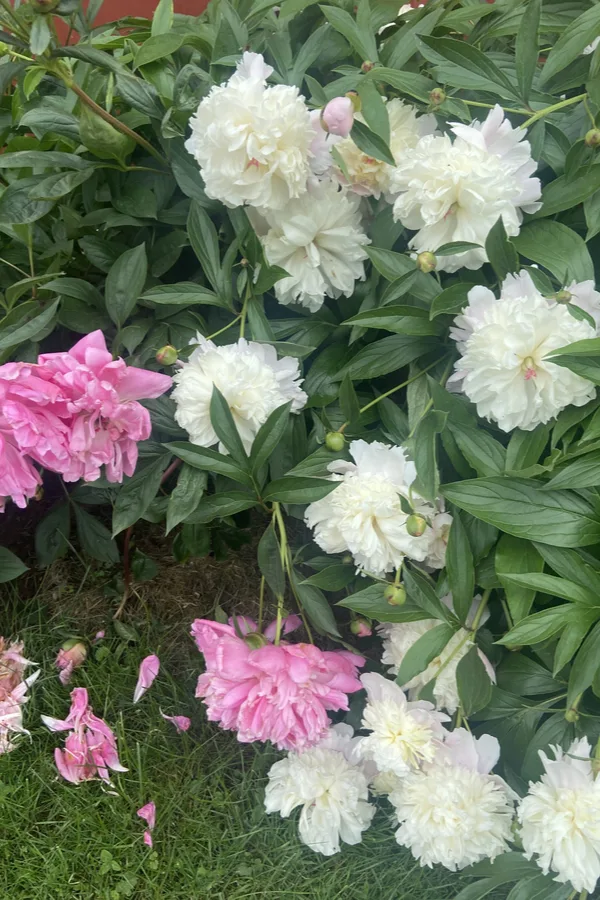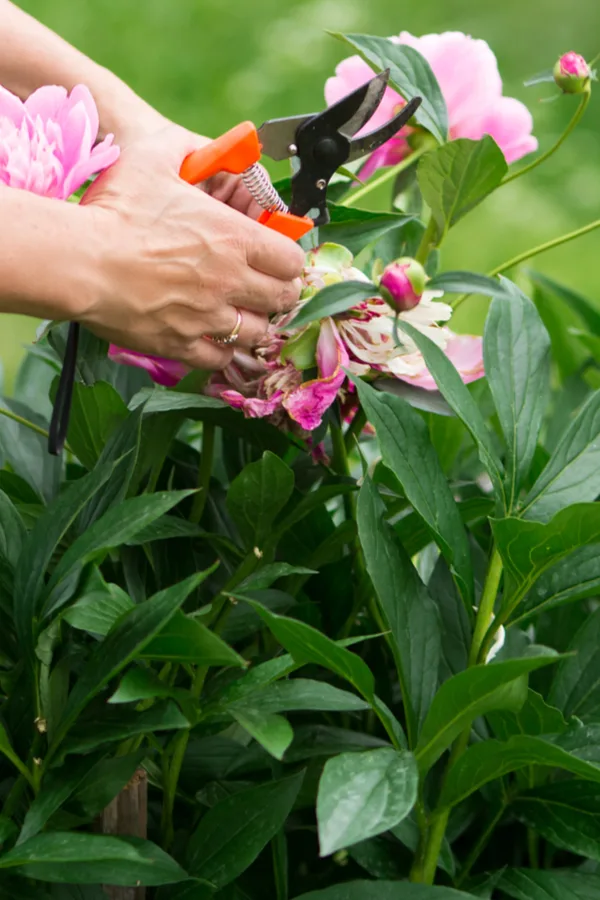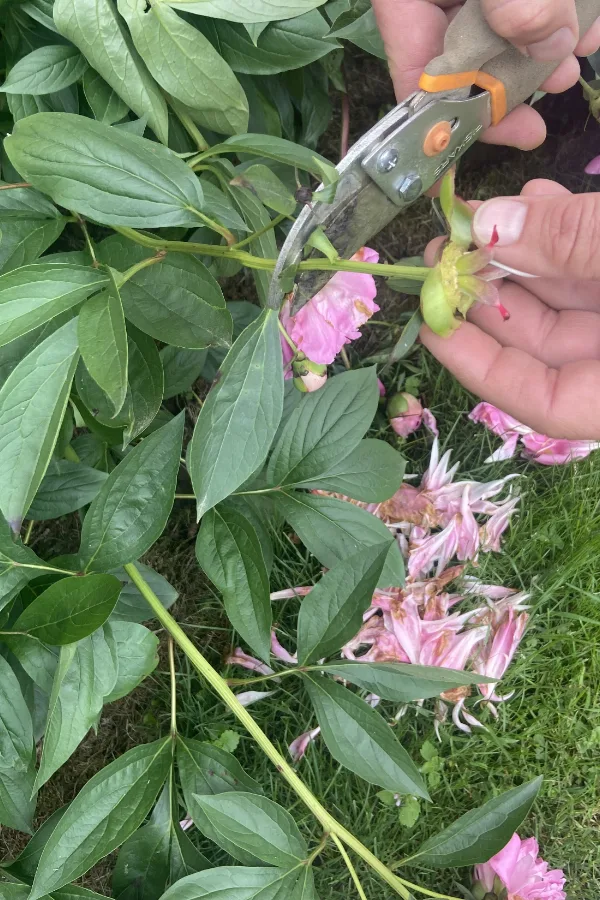Did you know that how you care for your peony bushes after they bloom can make a big difference in how they bloom and perform next year?
Peony bushes are one of the most beautiful flowers to behold each and every spring. With large blooms exploding in vibrant color, they are a welcome sight after the long, dark days that winter can bring.
Peonies grow in a wide range of climates. In fact, they are winter hardy from zone 3 all the way up to zone 8. And with bushes that bloom in stunning shades of pink, white, orange, red and yellow, it’s easy to see why they are one of the most popular perennial bushes of all to plant in the home landscape.

But even with their massive popularity, there is often confusion about how to care for them throughout the year. Especially after they bloom in late spring to early summer. And as it turns out, that after-bloom care really is critical to their blooming success the following year.
With that in mind, here is a look what to do with your peonies after they bloom to make sure they are just as stunning next spring!
What To Do With Peony Bushes After They Bloom
Just to clarify before we begin, there are two distinct varieties of peonies – peony bushes, and peony trees.
Tree peonies are a larger, woody perennial that continue to grow and produce larger each season from the previous year’s growth.

Peony bushes, on the other hand, are a herbaceous bush that dies back each year all the way to the ground. They are by far the most popular of all peonies, and what today’s article is all about.
The Brilliant Blooms of a Peony Bush
On average, peony bushes bloom heavily for a four to six week period in late spring. The blooms of a peony bush are some of the longest lasting of any perennial. In fact, each individual flower can last as long as 10 to 12 days in full glory.
But it’s what you do with those blooms as they begin to fade that really makes a difference in the plant’s overall performance the following year.
The Importance of Deadheading Peony Blooms
As soon as a peony bloom begins to fade, it should be cut back from the plant. Removing the dying bloom not only keeps the bush neat and tidy, but also helps preserve the plant’s power for next year’s bloom set.

Unfortunately, when a decaying bloom is left on the plant, it continues to milk precious resources. The plant will continue to send nutrients to the bloom in hopes of repairing it.
But when old blooms are removed, some of the resources are re-directed to growing thicker foliage, while the remaining nutrients are then stored for energizing next year’s bloom set.
Deadheading Peonies
To remove spent blooms, cut the flower’s stem back to the first full set of leaves. It is important to use a clean, sharp pair of pruning shears or scissors for the task. Clean cuts are easier for the plant to heal, and require less resources.
When deadheading, it is important to remove down only to the first full set of leaves. In fact, keeping as much foliage on the plant is extremely important. All of that foliage helps draw in even more nutrients and energy for the plant to use again next year.

Fertilizing – How To Care For Peonies After They Bloom
Peony bushes respond well to fertilizing as it provides extra nutrients for larger growth and blooms. For peonies, there are two critical times to fertilize – early spring and right after they finish blooming.
Early spring fertilizing provides a boost for the upcoming bloom cycle. It should be applied early in the season right before or as soon as the plant begins to emerge from the ground.
But as soon as your peony bush finishes flowering, it is important to give it another boost. After bloom fertilizing helps the plant recover quickly and gives it nutrients to store for next year’s cycle.

As for what fertilizer is best, many long-time peony gardeners use a combination of compost and bone meal. Bone meal helps to re-energize the roots of the plant, and is an excellent choice for peonies. The compost meanwhile is balanced with a wide range of nutrients for the plant.
If using a granular fertilizer, select one with a lower nitrogen content for best results. Peonies need nitrogen, but rely on potassium and phosphorous a bit more. A fertilizer in the 5(N)-10(K)-10(P) is an excellent choice for peonies.
Planting, Moving & Dividing Peony Bushes – How To Care For Peonies After They Bloom
Unfortunately, one of the things you should not do with your peonies after they bloom is move or transplant them.
Fall is actually the best time for planting peony bushes. And that includes digging up and moving existing bushes, as well as splitting them into additional plants if they have become too large.
Although peonies can be planted in early spring, the bushes struggle to develop and establish through the hot summer. The result are bushes that lag behind in first year growth.

In fact, most peonies that are planted in the spring or late spring will take an additional year to develop their blooms.
But by planting or dividing in the fall, the roots have plenty of time to settle in and establish in the cool weather before going dormant through winter. That leaves them more than ready to hit the ground running come the following spring.
Late Fall Care – How To Care For Peony Bushes After They Bloom
For herbaceous peonies, the foliage will completely die off once a few hard frosts or a hard freeze hits them. Once this occurs, it’s time to cut your plant back to the ground.
Leaving decaying foliage, stems and branches in place is an open invitation to pest and disease. Simply cut the plant down within 1/2″ of the soil level, and apply a few inches of mulch, and get ready for more blooms next spring!
Here is to getting the most from your peony bushes with a little after-blooming care! For more great articles on perennial flowers and care, check out our Perennial Section on the website.

This Is My Garden is a website dedicated to spreading the love and knowledge of gardening around the world. We publish two new garden articles each week. This article may contain affiliate links.
